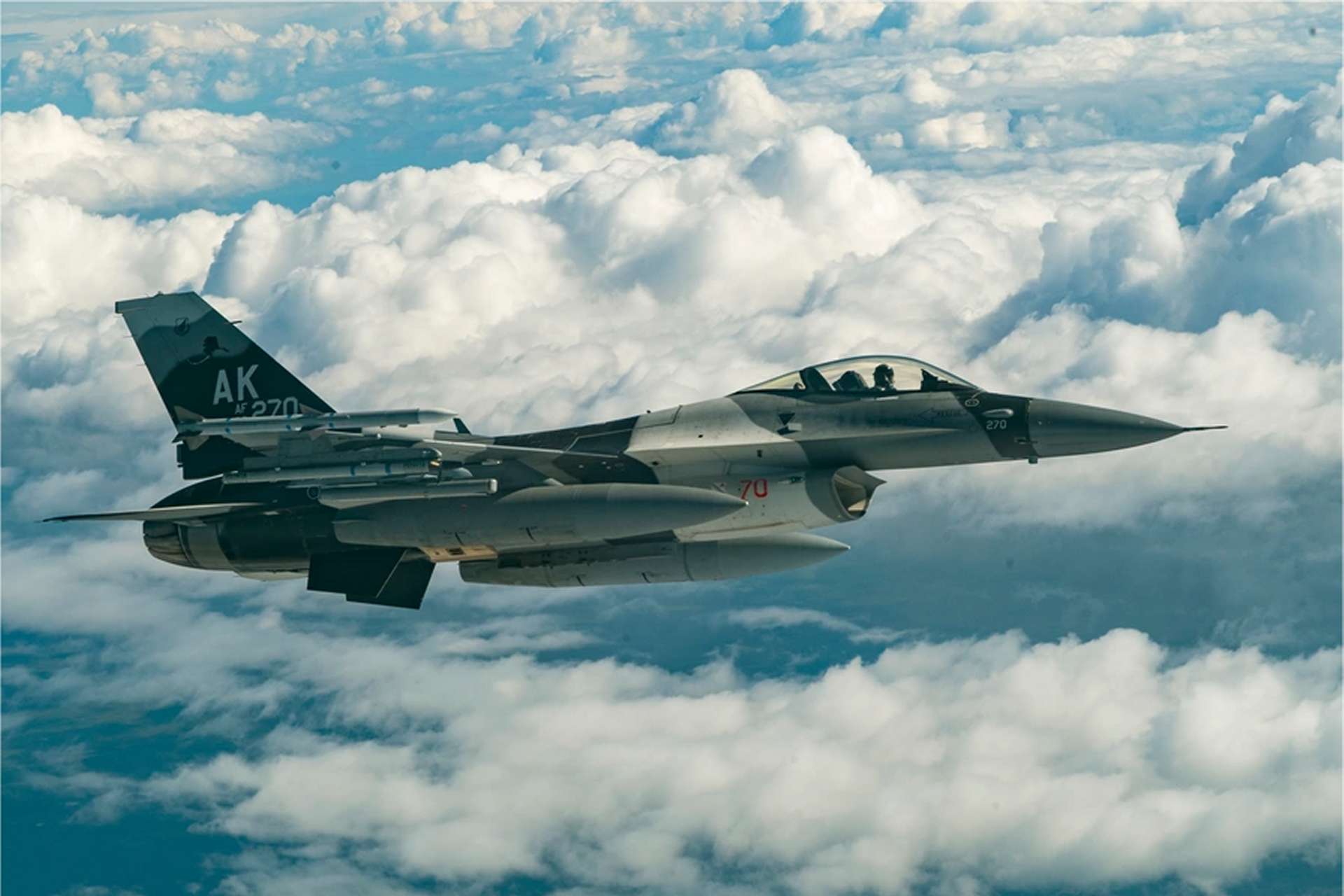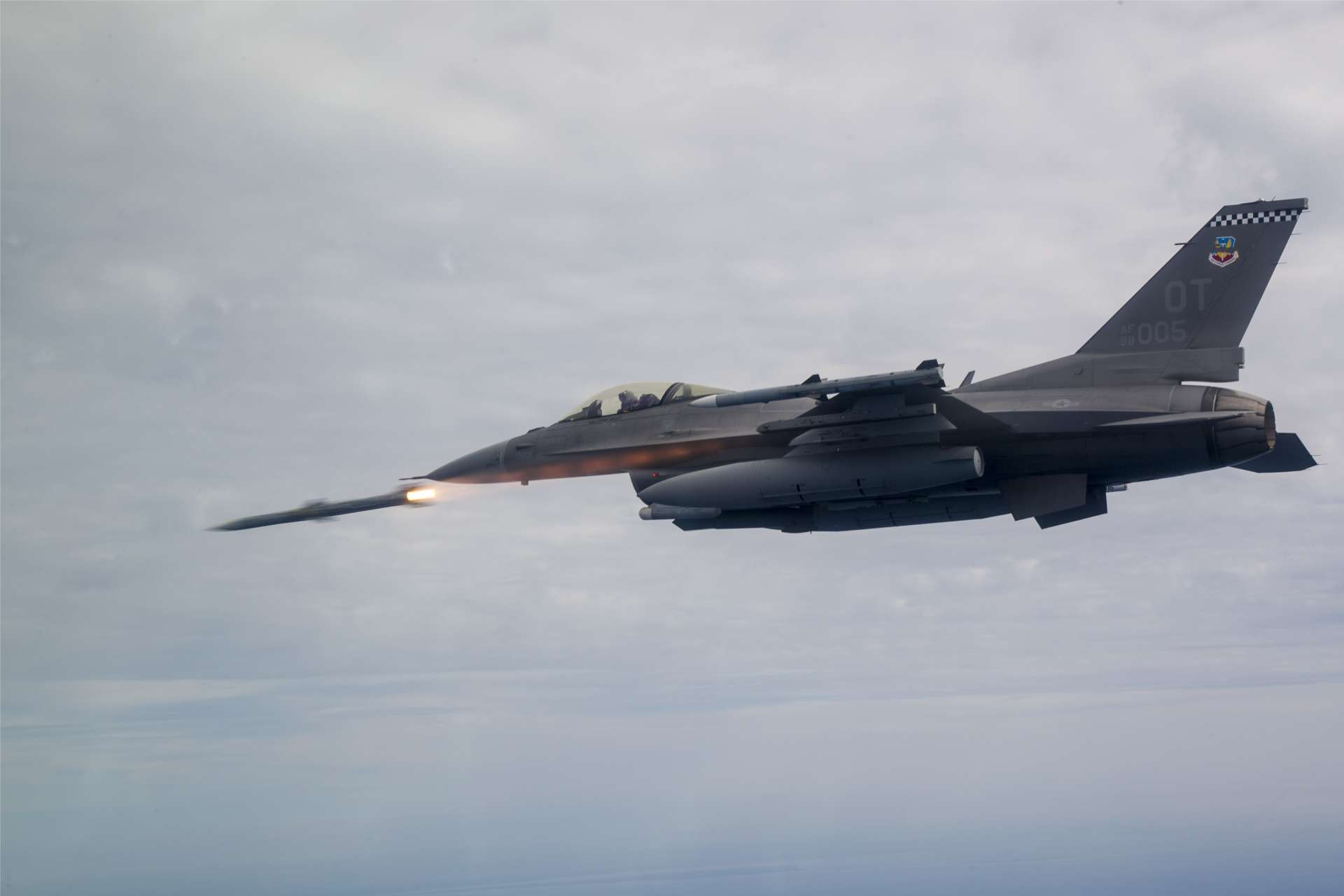First Ukrainian Pilots Complete F-16 Training in United States

{loadposition bannertop}
Breaking news
{loadposition sidebarpub}
The first group of Ukrainian pilots has successfully completed their F-16 training program in Arizona, according to Erin Hannigan, spokesperson for the U.S. Air National Guard. This news was reported by Politico on May 23, 2024.Follow Army Recognition on Google News at this link
google_ad_client = “pub-4068738923530102”;
/* 468×15 data sheet menu top dark green */
google_ad_slot = “3500417247”;
google_ad_width = 468;
google_ad_height = 15;
// ]]>
google_ad_client = “pub-4068738923530102”;
/* top_468x60_fiche_technique */
google_ad_slot = “2746785843”;
google_ad_width = 468;
google_ad_height = 60;
// ]]>
F-16 Fighting Falcon is a multi-role aircraft. (Picture source: US DoD)
Ukraine is expected to receive dozens of American-made fourth-generation fighter jets from the Netherlands, Belgium, Denmark, and Norway. Several countries, including the United States, have pledged to support Ukrainian aviators with the necessary training as part of the fighter jet coalition, notably the United States, which has just completed the training of the first Ukrainian pilots.
Hannigan did not specify the number of graduates or the exact graduation date, citing safety concerns. The newly trained pilots will now continue their training in Europe, according to an undisclosed source cited by Politico. The initial group of Ukrainian pilots began their training at the Morris Air National Guard Base in Tucson, Arizona, last October. The training sessions are conducted by the 162nd Wing of the Air National Guard.
The F-16A/B Fighting Falcon, originally built by General Dynamics and now produced by Lockheed Martin, is a multi-role aircraft that has been in service since its introduction on August 17, 1978. Designed to perform a variety of missions, it made its first flight on February 2, 1974. Despite decades of service, it remains active, with an initial unit cost for the F-16A estimated at $20 million. More than 4,588 units had been built as of April 25, 2019.
The crew of an F-16 typically consists of a single pilot, although two-seat versions exist, such as the TF-16N, F-16B, F-16D, and F-16F. The propulsion relies on a single Pratt & Whitney F100-PW-229 turbofan engine, capable of generating 79 kN of thrust without afterburner and 130 kN with afterburner.
In terms of dimensions, the F-16 has a wingspan of 9.8 meters, a length of 14.8 meters, and a height of 4.8 meters, with a wing area of 27.87 square meters. Its empty weight is 8,272 kg, and it can reach a maximum weight of 16,900 kg when fully loaded, with a standard armed weight of 12,000 kg.
Its performance is impressive, with a maximum speed of 2,173 km/h (Mach 2.04) and a ceiling of 15,200 meters. The F-16 can climb at a rate of 15,240 meters per minute and has a range of 550 km. The wing loading is 431 kg/m², and the thrust-to-weight ratio is 0.90, ensuring excellent maneuverability and combat capabilities, which are valuable for the Ukrainian forces despite the aircraft’s age.
For its internal armament, the F-16 is equipped with a 20 mm M61A1 Vulcan cannon. Its external armament is highly diversified, including air-to-air missiles such as the AIM-7 Sparrow, Sidewinder, ASRAAM, Magic 2, and AMRAAM. It can also carry air-to-ground missiles like the Maverick, anti-radar missiles like the HARM, and various bombs, including laser-guided ones and JDAMs such as the Mk 82, Mk 83, Blu 109, or Mk 84, as well as rockets.
The avionics of the F-16 include fly-by-wire controls, a heads-up display, a HOTAS (Hands On Throttle-And-Stick) interface, and a range of advanced radars, from the AN/APG-66 to the AN/APG-68, and more recently, the AN/APG-83 active electronically scanned array radar. It also features a forward-looking infrared (FLIR) radar, an ALR-56M radar warning receiver, GPS, Link 16 for communications, and an AN/ALQ-131 electronic warfare pod for enemy defense suppression missions.
In addition to training in the United States, other Ukrainian pilots are undergoing training in Denmark, and Romania has also established an F-16 training facility for Ukrainian aviators. Earlier this week, the Dutch Ministry of Defense announced that the first 10 Ukrainian military personnel had completed their F-16 maintenance training in the Netherlands.
The first group of Ukrainian pilots has completed their F-16 training program. ( Picture Source: US DoD)

{loadposition bannertop}
Breaking news
{loadposition sidebarpub}
The first group of Ukrainian pilots has successfully completed their F-16 training program in Arizona, according to Erin Hannigan, spokesperson for the U.S. Air National Guard. This news was reported by Politico on May 23, 2024.
Follow Army Recognition on Google News at this link
/* 468×15 data sheet menu top dark green */
google_ad_slot = “3500417247”;
google_ad_width = 468;
google_ad_height = 15;
// ]]>
/* top_468x60_fiche_technique */
google_ad_slot = “2746785843”;
google_ad_width = 468;
google_ad_height = 60;
// ]]>
F-16 Fighting Falcon is a multi-role aircraft. (Picture source: US DoD)
Ukraine is expected to receive dozens of American-made fourth-generation fighter jets from the Netherlands, Belgium, Denmark, and Norway. Several countries, including the United States, have pledged to support Ukrainian aviators with the necessary training as part of the fighter jet coalition, notably the United States, which has just completed the training of the first Ukrainian pilots.
Hannigan did not specify the number of graduates or the exact graduation date, citing safety concerns. The newly trained pilots will now continue their training in Europe, according to an undisclosed source cited by Politico. The initial group of Ukrainian pilots began their training at the Morris Air National Guard Base in Tucson, Arizona, last October. The training sessions are conducted by the 162nd Wing of the Air National Guard.
The F-16A/B Fighting Falcon, originally built by General Dynamics and now produced by Lockheed Martin, is a multi-role aircraft that has been in service since its introduction on August 17, 1978. Designed to perform a variety of missions, it made its first flight on February 2, 1974. Despite decades of service, it remains active, with an initial unit cost for the F-16A estimated at $20 million. More than 4,588 units had been built as of April 25, 2019.
The crew of an F-16 typically consists of a single pilot, although two-seat versions exist, such as the TF-16N, F-16B, F-16D, and F-16F. The propulsion relies on a single Pratt & Whitney F100-PW-229 turbofan engine, capable of generating 79 kN of thrust without afterburner and 130 kN with afterburner.
In terms of dimensions, the F-16 has a wingspan of 9.8 meters, a length of 14.8 meters, and a height of 4.8 meters, with a wing area of 27.87 square meters. Its empty weight is 8,272 kg, and it can reach a maximum weight of 16,900 kg when fully loaded, with a standard armed weight of 12,000 kg.
Its performance is impressive, with a maximum speed of 2,173 km/h (Mach 2.04) and a ceiling of 15,200 meters. The F-16 can climb at a rate of 15,240 meters per minute and has a range of 550 km. The wing loading is 431 kg/m², and the thrust-to-weight ratio is 0.90, ensuring excellent maneuverability and combat capabilities, which are valuable for the Ukrainian forces despite the aircraft’s age.
For its internal armament, the F-16 is equipped with a 20 mm M61A1 Vulcan cannon. Its external armament is highly diversified, including air-to-air missiles such as the AIM-7 Sparrow, Sidewinder, ASRAAM, Magic 2, and AMRAAM. It can also carry air-to-ground missiles like the Maverick, anti-radar missiles like the HARM, and various bombs, including laser-guided ones and JDAMs such as the Mk 82, Mk 83, Blu 109, or Mk 84, as well as rockets.
The avionics of the F-16 include fly-by-wire controls, a heads-up display, a HOTAS (Hands On Throttle-And-Stick) interface, and a range of advanced radars, from the AN/APG-66 to the AN/APG-68, and more recently, the AN/APG-83 active electronically scanned array radar. It also features a forward-looking infrared (FLIR) radar, an ALR-56M radar warning receiver, GPS, Link 16 for communications, and an AN/ALQ-131 electronic warfare pod for enemy defense suppression missions.
In addition to training in the United States, other Ukrainian pilots are undergoing training in Denmark, and Romania has also established an F-16 training facility for Ukrainian aviators. Earlier this week, the Dutch Ministry of Defense announced that the first 10 Ukrainian military personnel had completed their F-16 maintenance training in the Netherlands.

The first group of Ukrainian pilots has completed their F-16 training program. ( Picture Source: US DoD)




